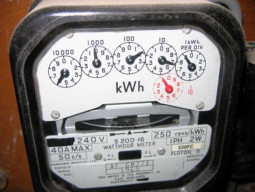
The China-Pakistan Economic Corridor (CPEC) is a flagship project of the Belt and Road Initiative [BRI], launched in 2015. The multibillion project reflects China’s economic progress which it wishes to share with its neighbours. Several commentators refer to it as a ‘game changer’ due to its plan to connect up a vast arch of regional markets from China to South and West Asia, the Middle East, Africa, and Europe.
CPEC aims to promote economic development and inter-regional connectivity, partially achieved with infrastructural, industrial and socio-economic development projects, especially in Sindh and Balochistan. Due to its strategic location, Gwadar is already transformed. Besides the infrastructure developments, Gwadar, as one of CPEC’s economic zone, is witnessing multiple social welfare programmes, such as Gwadar Women’s Employment Development Centre, aimed at skills enhancement and poverty alleviation among women. Furthermore, the planned roads, health facilities, schools and middle and small-scale business opportunities will empower the local communities and eventually make them self-sufficient. And, in collaboration with China’s Ministry of Ecology and Environment, the CPEC Authority has so far installed 3,000 solar panels at Nighori Ward in Gwadar to provide ‘free-of-cost’ electricity to local users.
Beyond Balochistan, Pakistani and Chinese companies have set up healthcare projects like a 200-bed ICU for accidental emergencies at PIMS in Islamabad. Several NGOs are also active in environmental programmes geared towards combating global warming and promoting Pakistan’s green development agenda. In the technology domain, Pakistan and China’s leading technology companies are in joint efforts to start manufacturing mobile phones in Lahore, which will immensely reduce the prices of mobile phones. Local companies and individual farmers are also introducing new and cheap technology to improve agriculture – a sector that employs almost 40% of the population, mostly women.
During his first speech to the National Assembly, PM Shehbaz Sharif said his government would work with China to eliminate all obstacles impeding the CPEC progress. Beijing also expressed readiness to work with the new government to accelerate CPEC-related projects.
The responsibility to support CPEC also falls on the people of Pakistan from all walks of life. The general public’s goodwill is an essential precondition for maximising CPEC benefits. Therefore, there is a need for pragmatism and enthusiasm from all the stakeholders.
We must know that CPEC is not a ‘China-sole’ sensation but a massive investment from both Pakistan and China. More so, many other countries – the US, the UK, Germany, Canada, the Netherlands, etc – are also investing considerable resources in the mega project. Reports indicate that close to 18 countries have so far invested in the Allama Iqbal Industrial City in textile, IT, agriculture, and science and tech sectors. Therefore, the propaganda against CPEC should be tackled through civic education about the essence of the initiative. Media should also highlight the project’s achievements to the ordinary people, offer intelligible discourse about the related developments, and make future projections.
Academic institutions have a significant role in mainstreaming CPEC in research and all academic disciplines. Research on BRI should be available to the public for awareness. Civil society organisations from Pakistan and China can also contribute to the sensitisation initiatives about CPEC. Anti-CPEC elements need to be addressed peacefully and through dialogue and adult literacy. Religious and cultural leaders must be engaged to clarify the initiative’s goals. Local communities in the host province must be involved in the decision-making process, and it should be demonstrated to them that the developments in the region are for their prosperity. All participatory approaches and development communication theories ought to be employed to allay the local communities ‘fears’ – if they exist.
Published in The Express Tribune, June 18th, 2022.
Like Opinion & Editorial on Facebook, follow @ETOpEd on Twitter to receive all updates on all our daily pieces.




















COMMENTS
Comments are moderated and generally will be posted if they are on-topic and not abusive.
For more information, please see our Comments FAQ